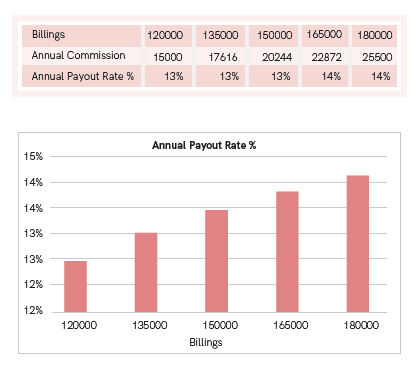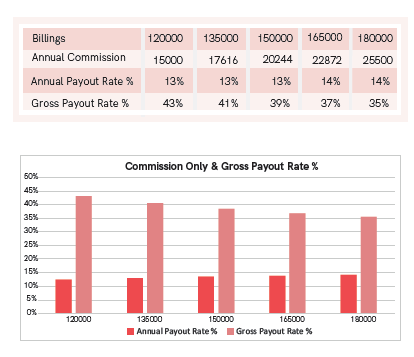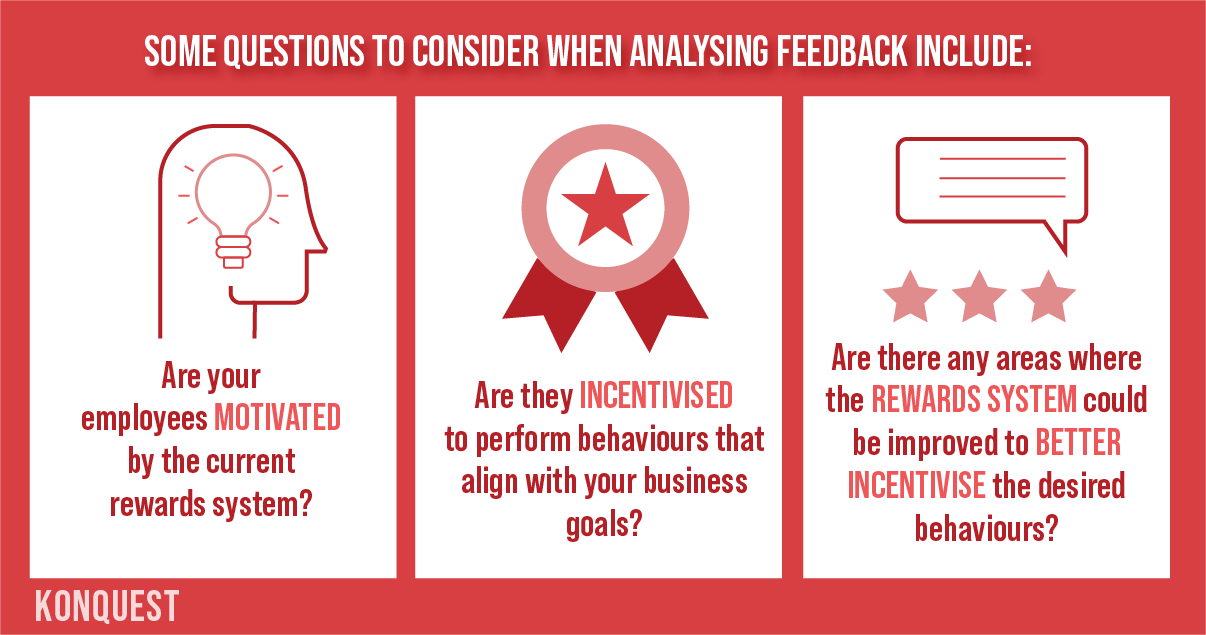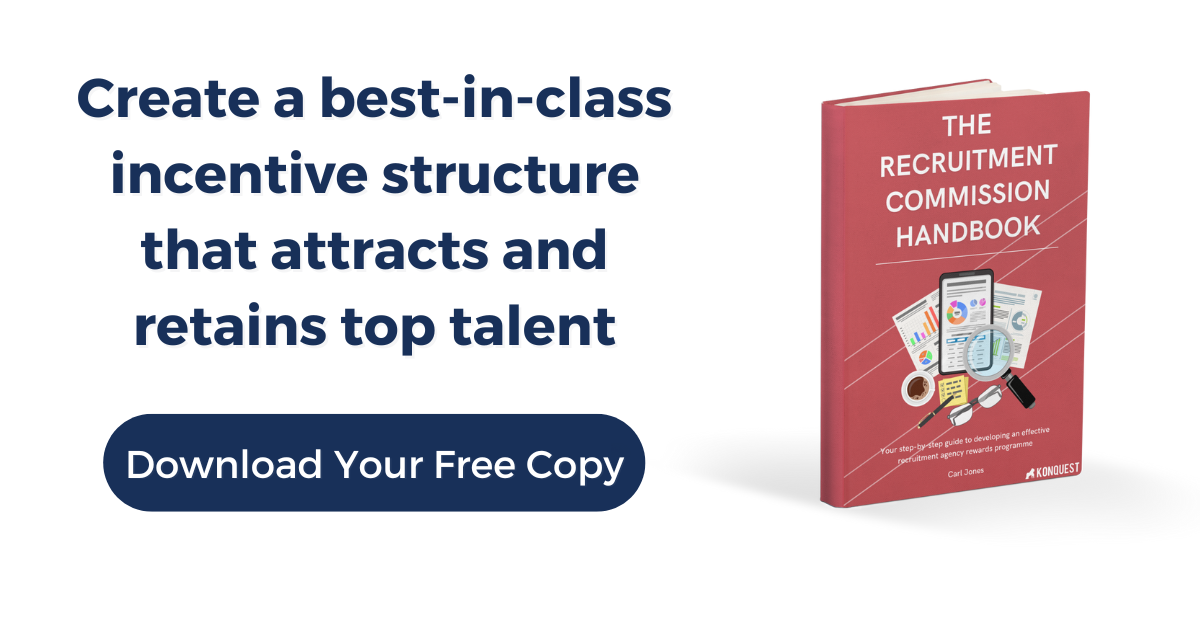Are you considering implementing a new rewards program for your recruitment agency but need help figuring out where to start?
This post will guide you through the 4-step process of reviewing your current program and making the necessary enhancements to incentivise the desired behaviours among your team.
We'll explore the key fundamentals to consider, including strategy, roles and responsibilities, and performance metrics. We’ll also conduct a quick health check of your current rewards program.
1 - Fundamental Review: Strategy, Roles, and Measurements
Before you design and implement a new rewards program, it's important to review where you currently are. Rather than fix what isn't broken, focus on enhancing the aspects that already work and solving any existing problems.
Your strategy should come first, as it provides the foundation for your rewards program. You should also be clear on your roles, responsibilities, and desired behaviours, as they will guide the type of rewards you offer. It's also important to determine how you'll measure the performance you want to incentivise. Once you've established these fundamentals, you can move on to a quick health check to gauge how your existing rewards program fits with your business.
2 - Quick Health Check: Commission and Gross Payout Rates
Key points to consider when reviewing your current rewards program include:
Determining your strategy, identifying the desired roles, responsibilities, and behaviours, and establishing how you'll measure performance to be incentivised. It's important to have a clear understanding of these fundamentals before beginning the review process.
To conduct a quick health check, look at your profit and loss (P&L) statement from the previous year. Calculate your commission payout rate by dividing your total commission by gross profit, and use a general benchmark of 16% to assess whether your current scheme is competitive.

Next, calculate your gross payout rate by adding up commission, salaries, and employer's National Insurance contributions, and dividing the sum by your gross profit. This will give you a broader perspective on your scheme's effectiveness in relation to the market. If your payout rate is much lower than 30% or much higher than 40-45%, it may indicate that changes are needed, although this will depend on your business goals and strategy.

3 - Data Analysis: Modeling Payout Rates and Accounting for Costs
The third step in designing an effective rewards programme for your recruitment agency is to determine the performance metrics you will use to incentivise your consultants. Before you start, ensure that you understand the desired behaviours you want to motivate and what you are trying to achieve.
Think about how you will measure performance. This might include:
You should then decide how much weight to assign to each metric and what performance levels you expect to reward.
To get a more comprehensive view of how your current scheme is performing, conduct a deep-dive analysis of your commission data. This will enable you to model payout rates across a range of performance scenarios, so you can understand how well you are currently aligned with incentivising the right behaviours. You should calculate your payout rates at a range of performance levels, including on-target performance and at least one degree above and below this. By adding salary and on-costs to this analysis and overlaying any team leader or manager commission, you can determine your true total payout rates.
4 - Qualitative Feedback: Understanding Rewards Scheme Impact

The discoveries you made in your health check and deep dive analysis are your quantitative data, but to get an even better hande on your current status, get qualitative feedback from your team.
Talk to your consultants to find out what think about your rewards programme as it stands. Try to focus your questions on the structure of your rewards scheme rather than the raw numbers. You already know your consultants are going to say they want more money. You should also include your management team in the feedback process, as they have a unique perspective on the impact of the rewards system on their team's behaviours.
Once you have gathered feedback from your team, it's important to analyse the information and determine how well you are currently aligned with incentivising the right behaviours. Some questions to consider when analysing feedback include:
-
Are your employees motivated by the current rewards system?
-
Are they incentivised to perform behaviours that align with your business goals?
-
Are there any areas where the rewards system could be improved to better incentivise the desired behaviours?
When analysing feedback, keep in mind that people may have different opinions and priorities, so it's essential to look for common themes that emerge. If there are discrepancies in feedback, it's worth exploring further to understand why certain individuals have different perspectives.
Once you have analysed the feedback, you can begin to make changes to the rewards system to better incentivise your desired behaviours. When making changes, it's essential to communicate the reasons behind them and the expected impact on employee behaviours. It's also important to involve your team in the change process by seeking feedback on the proposed changes and implementing their suggestions where appropriate. By involving your team in the process, you can create a rewards system that better motivates employees and aligns with your business goals.
Find out more from Konquest
In conclusion, an effective rewards program can be a valuable tool for motivating employees and aligning their behaviours with the goals of a recruitment agency.
By conducting a thorough review of the current program, establishing clear performance metrics, and analysing feedback from the team, agency leaders can make informed decisions about how to improve the program and better incentivise desired behaviours.
Ultimately, by involving the team in the process and communicating the changes effectively, recruitment agencies can create a rewards program that motivates their employees and drives business success.